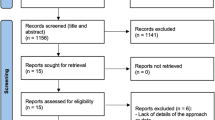Abstract
In maxillofacial surgery, intrasulcular incisions are often used. This prospective case series was established to evaluate the detrimental effects of intrasulcular incisions on periodontal structures. In 35 patients, measurements of probing depth and crown length before and 10 months postoperatively were performed to calculate changes of attachment level and gingival recession. In a subgroup, surgically treated sites were compared with untreated control sites. A nonparametric test was applied for longitudinal and split-mouth comparisons. Overall, intrasulcular incisions did not induce significant attachment loss. The frequency of sites losing ≥2 mm of attachment was 5.0%, 2.6%, and 4.7% at mesial, buccal, and distal sites, respectively. Intrasulcular incisions caused only a slight increase in gingival recession by 0.4 ± 0.5, 0.2 ± 0.3, and 0.3 ± 0.4 mm at mesial, buccal, and distal sites, respectively. Within the limitations of the study design, it can be concluded that intrasulcular incisions without additional vertical incisions do not impose a serious risk for attachment loss and/or gingival recession.



Similar content being viewed by others
References
Chindia M, Valderhaug J (1995) Periodontal status following trapezoidal and semilunar flaps in apicectomy. East Afr Med J 72(9):564–567
Dowling E, Maze G, Kaldahl W (1994) Postsurgical timing of restorative therapy: a review. J Prosthodont 3(3):172–177
Kramper B, Kaminski E, Osetek E, Heuer M (1984) A comparative study of the wound healing of three types of flap design used in periapical surgery. J Endod 10(1):17–25
Lang N, Tonetti M (2003) Periodontal risk assessment (PRA) for patients in supportive periodontal therapy (SPT). Oral Health Prev Dent 1(1):7–16
Luebke R (1974) Surgical endodontics. Dent Clin North Am 18(2):379–391
Machtei E, Dunford R, Hausmann E, Grossi S, Powell J, Cummins D et al (1997) Longitudinal study of prognostic factors in established periodontitis patients. J Clin Periodontol 24(2):102–109
Nieri M, Muzzi L, Cattabriga M, Rotundo R, Cairo F, Pini Prato G (2002) The prognostic value of several periodontal factors measured as radiographic bone level variation: a 10-year retrospective multilevel analysis of treated and maintained periodontal patients. J Periodontol 73(12):1485–1493
Oates T, West J, Jones J, Kaiser D, Cochran D (2002) Long-term changes in soft tissue height on the facial surface of dental implants. Implant Dent 11(3):272–279
Persson G, Attstrom R, Lang N, Page R (2003) Perceived risk of deteriorating periodontal conditions. J Clin Periodontol 30(11):982–989
Roccuzzo M, Bunino M, Needleman I, Sanz M (2002) Periodontal plastic surgery for treatment of localized gingival recessions: a systematic review. J Clin Periodontol 29(Suppl 3):178–194 (discussion 195–196)
Small P, Tarnow D (2000) Gingival recession around implants: a 1-year longitudinal prospective study. Int J Oral Maxillofac Implants 15(4):527–532
Suarez-Cunqueiro M, Gutwald R, Reichman J, Otero-Cepeda X, Schmelzeisen R (2003) Marginal flap versus paramarginal flap in impacted third molar surgery: a prospective study. Oral Surg Oral Med Oral Pathol Oral Radiol Endod 95(4):403–408
Velvart P, Peters C (2005) Soft tissue management in endodontic surgery. J Endod 31(1):4–16
Velvart P, Ebner-Zimmermann U, Ebner J (2003) Comparison of papilla healing following sulcular full-thickness flap and papilla base flap in endodontic surgery. Int Endod J 36(10):653–659
Velvart P, Ebner-Zimmermann U, Ebner J (2004) Comparison of long-term papilla healing following sulcular full thickness flap and papilla base flap in endodontic surgery. Int Endod J 37(10):687–693
Velvart P, Ebner-Zimmermann U, Ebner J (2004) Papilla healing following sulcular full thickness flap in endodontic surgery. Oral Surg Oral Med Oral Pathol Oral Radiol Endod 98(3):365–369
Velvart P (2002) Papilla base incision: a new approach to recession-free healing of the interdental papilla after endodontic surgery. Int Endod J 35(5):453–460
Wennstrom J (1983) Regeneration of gingiva following surgical excision. A clinical study. J Clin Periodontol 10(3):287–297
Conflict of interest statement
The authors declare that they have no conflict of interests.
Author information
Authors and Affiliations
Corresponding author
Rights and permissions
About this article
Cite this article
Deschner, J., Wolff, S., Hedderich, J. et al. Dimensional changes of periodontal soft tissues after intrasulcular incision. Clin Oral Invest 13, 401–408 (2009). https://doi.org/10.1007/s00784-009-0251-y
Received:
Accepted:
Published:
Issue Date:
DOI: https://doi.org/10.1007/s00784-009-0251-y




